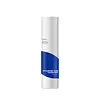What's inside
What's inside
 Key Ingredients
Key Ingredients

 Benefits
Benefits

 Concerns
Concerns

 Ingredients Side-by-side
Ingredients Side-by-side

Water
Skin Conditioning1,2-Hexanediol
Skin ConditioningCaprylic/Capric Triglyceride
MaskingPolyglyceryl-10 Laurate
Skin ConditioningSorbitan Sesquioleate
EmulsifyingSodium Hyaluronate
HumectantAllantoin
Skin ConditioningEthylhexylglycerin
Skin ConditioningPentylene Glycol
Skin ConditioningTrehalose
HumectantSodium PCA
HumectantBetaine
HumectantBeta-Glucan
Skin ConditioningCentella Asiatica Extract
CleansingSodium Hyaluronate Crosspolymer
HumectantHydrolyzed Hyaluronic Acid
HumectantXylitylglucoside
HumectantAnhydroxylitol
HumectantCitronellol
PerfumingHyaluronic Acid
HumectantXylitol
HumectantVitis Vinifera Juice Extract
AntioxidantPropanediol
SolventPelargonium Graveolens Flower Oil
MaskingHydrolyzed Sodium Hyaluronate
Skin ConditioningWater, 1,2-Hexanediol, Caprylic/Capric Triglyceride, Polyglyceryl-10 Laurate, Sorbitan Sesquioleate, Sodium Hyaluronate, Allantoin, Ethylhexylglycerin, Pentylene Glycol, Trehalose, Sodium PCA, Betaine, Beta-Glucan, Centella Asiatica Extract, Sodium Hyaluronate Crosspolymer, Hydrolyzed Hyaluronic Acid, Xylitylglucoside, Anhydroxylitol, Citronellol, Hyaluronic Acid, Xylitol, Vitis Vinifera Juice Extract, Propanediol, Pelargonium Graveolens Flower Oil, Hydrolyzed Sodium Hyaluronate
Camellia Sinensis Leaf Water
MaskingButylene Glycol
HumectantGlycerin
Humectant1,2-Hexanediol
Skin ConditioningLuffa Cylindrica Fruit/Leaf/Stem Extract
Skin ConditioningOryza Sativa Extract
AbsorbentHibiscus Esculentus Fruit Extract
Skin ConditioningWater
Skin ConditioningBetaine
HumectantTrehalose
HumectantHydroxyethylcellulose
Emulsion StabilisingArtemisia Princeps Extract
Skin ConditioningPanthenol
Skin ConditioningSorbitol
HumectantSorbitan Sesquioleate
EmulsifyingEthylhexylglycerin
Skin ConditioningLaminaria Japonica Extract
Skin ProtectingDisodium EDTA
Sodium Hyaluronate
HumectantDisodium Phosphate
BufferingPolysorbate 60
EmulsifyingHydrogenated Lecithin
EmulsifyingSodium Phosphate
BufferingCeramide NP
Skin ConditioningCamellia Sinensis Leaf Water, Butylene Glycol, Glycerin, 1,2-Hexanediol, Luffa Cylindrica Fruit/Leaf/Stem Extract, Oryza Sativa Extract, Hibiscus Esculentus Fruit Extract, Water, Betaine, Trehalose, Hydroxyethylcellulose, Artemisia Princeps Extract, Panthenol, Sorbitol, Sorbitan Sesquioleate, Ethylhexylglycerin, Laminaria Japonica Extract, Disodium EDTA, Sodium Hyaluronate, Disodium Phosphate, Polysorbate 60, Hydrogenated Lecithin, Sodium Phosphate, Ceramide NP
 Reviews
Reviews

Ingredients Explained
These ingredients are found in both products.
Ingredients higher up in an ingredient list are typically present in a larger amount.
1,2-Hexanediol is a synthetic liquid and another multi-functional powerhouse.
It is a:
- Humectant, drawing moisture into the skin
- Emollient, helping to soften skin
- Solvent, dispersing and stabilizing formulas
- Preservative booster, enhancing the antimicrobial activity of other preservatives
Betaine is a common humectant (a substance that promotes retention of moisture). It's known to be gentle on the skin and can help balance hydration.
This ingredient is best for improving hydration and soothing irritated skin. Studies also show it helps even out skin tone.
Fun fact: Betaine is naturally created in the skin and body. The kind found within cosmetic products can be either plant-derived or synthetic.
Another name for betaine is trimethylglycine.
Learn more about BetaineEthylhexylglycerin (we can't pronounce this either) is commonly used as a preservative and skin softener. It is derived from glyceryl.
You might see Ethylhexylglycerin often paired with other preservatives such as phenoxyethanol. Ethylhexylglycerin has been found to increase the effectiveness of these other preservatives.
Sodium Hyaluronate is hyaluronic acid's salt form. It is commonly derived from the sodium salt of hyaluronic acid.
Like hyaluronic acid, it is great at holding water and acts as a humectant. This makes it a great skin hydrating ingredient.
Sodium Hyaluronate is naturally occurring in our bodies and is mostly found in eye fluid and joints.
These are some other common types of Hyaluronic Acid:
Learn more about Sodium HyaluronateSorbitan Sesquioleate is derived from sorbitol and oleic acid. It is an emulsifier and prevents ingredients from separating.
Specifically, this ingredient is a water-in-oil emulsifier, meaning it helps water dissolve into oil.
Some studies suggest this ingredient may cause irritation in some people. If you are unsure, it is best to patch test.
This ingredient may not be Malassezia folliculitis, or fungal-acne safe.
Learn more about Sorbitan SesquioleateTrehalose is a disaccharide made of two glucose molecules (glucose is sugar!). Trehalose is used to help moisturize skin. It also has antioxidant properties.
As a humectant, trehalose helps draw moisture from the air to your skin. This helps keep your skin hydrated.
Due to its antioxidant properties, trehalose may help with signs of aging. Antioxidants help fight free-radical molecules, unstable molecules that may damage your skin.
In medicine, trehalose and hyaluronic acid are used to help treat dry eyes.
Some animals, plants, and bacteria create trehalose as a source of energy to survive freeze or lack of water.
Learn more about TrehaloseWater. It's the most common cosmetic ingredient of all. You'll usually see it at the top of ingredient lists, meaning that it makes up the largest part of the product.
So why is it so popular? Water most often acts as a solvent - this means that it helps dissolve other ingredients into the formulation.
You'll also recognize water as that liquid we all need to stay alive. If you see this, drink a glass of water. Stay hydrated!
Learn more about Water